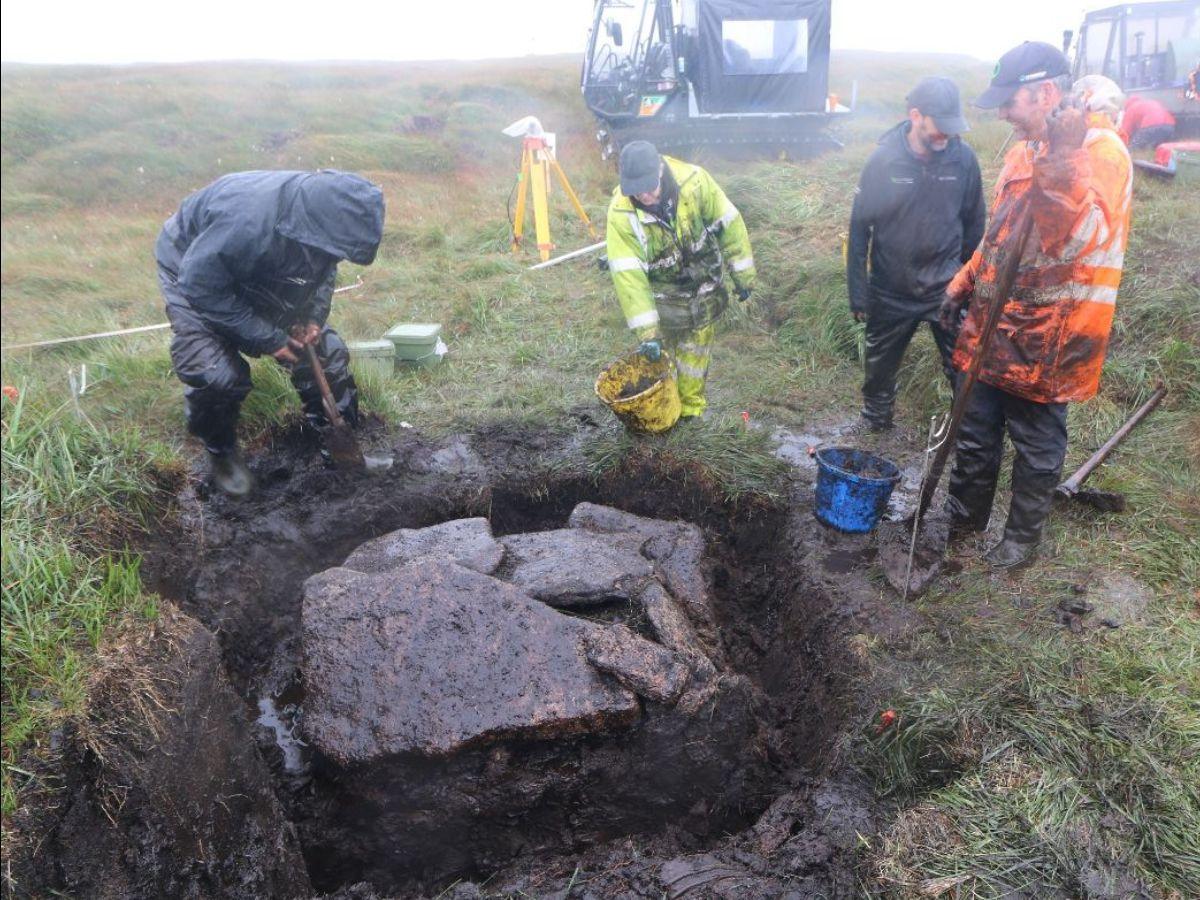Archaeologists make incredible Bronze Age discovery in National Park

The 4,000-year-old grave could provide a never-before-seen look at life in Bronze Age England.
- Published
Archaeologists have made some important new discoveries after finding an Early Bronze Age grave in Dartmoor National Park, in Devon.
Their work revealed a stone-built box that was used as a burial chamber in prehistoric times, and which contained well-preserved wood and other material yet to be identified.
The Dartmoor National Park Authority is now seeking funding for further mini explorations of the area and the future conservation of any artefacts found in it.
They hope the discovery will help archaeologists understand what life was like 4,000 years ago in the Bronze Age.
More like this
- Published14 August
- Published12 June
- Published13 August
The discovery is a big deal as it could provide us with a deeper understanding of Early Bronze Age life on Dartmoor.
This was a period which began around 4,000 years ago when people are believed to have used bronze tools and weapons.
The burial chamber was uncovered during a dig earlier this month and is believed to be around 3,800-years-old.
Dartmoor National Park Authority archaeologist and excavation director Dr Lee Bray described it as a 鈥渟tunning discovery".
The chamber is believed to be 3,800 years old
The burial chamber, which measures about 1m square, was covered with three large, granite stones.
This type of burial was likely used around 1800 B.C., based on scientific dating of charcoal from inside the tomb.
Archaeologists lifted the granite stones and discovered numerous pieces of well-preserved wood, as well as an additional 30cm of fill.
The team managed to move the entire tomb to a laboratory, using a special vehicle to carefully transport it off the moor, where painstaking micro-excavation will reveal the complete contents of the grave.
"We were all pretty speechless when we lifted the capstone and looked inside. Not only is (it) bigger than we expected, but it contained multiple pieces of wood that appear to have been deliberately shaped and cut.
"This prompts more questions: could the wood have been an object that was dismantled and deliberately placed inside the grave? If so, what was it and who did it belong to?
"The volume of material under the wood reaches a depth of about 30cm so there's every chance it contains objects or artefacts we can't see yet. The next stage is for micro-excavations to determine what's in there. It's very detailed work that'll take time to complete but we're all very excited about it."
It's now in the care of the Wiltshire Conservation and Museums Advisory Service, which is part of Wiltshire Council, where it will undergo more explorations.
More of the latest stories
- Published20 August
- Published21 August
- Published20 August
